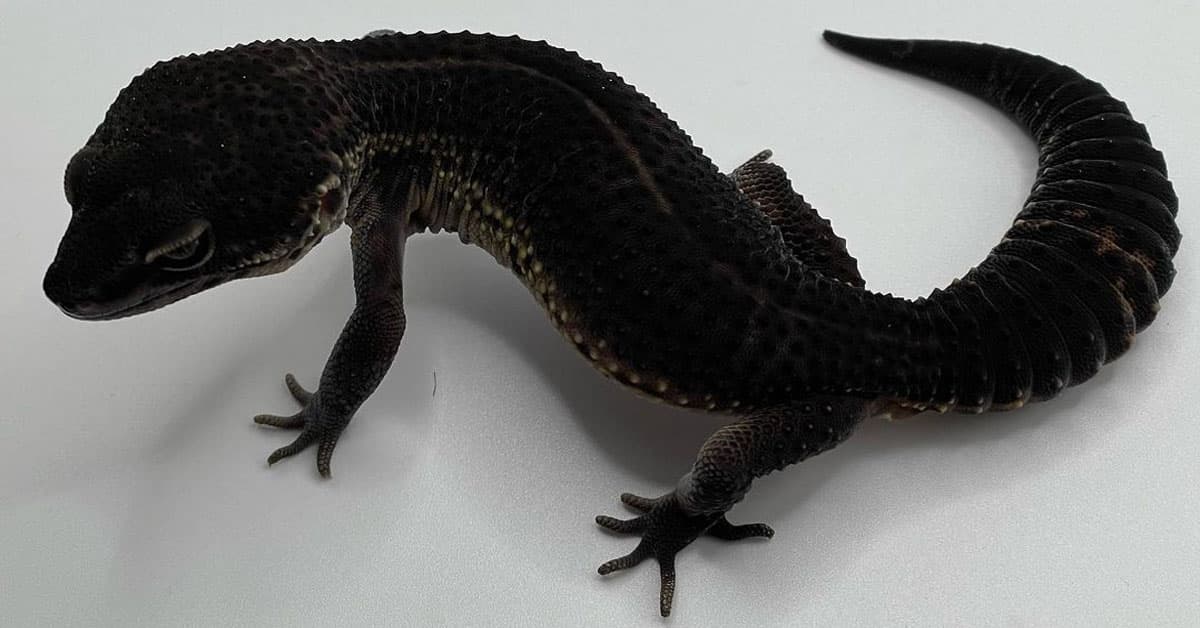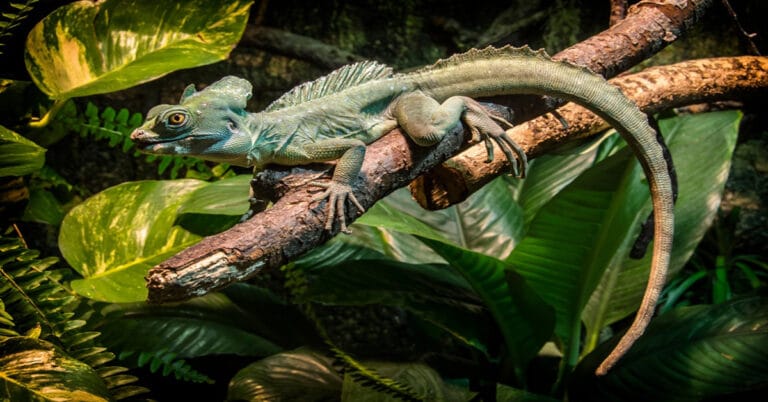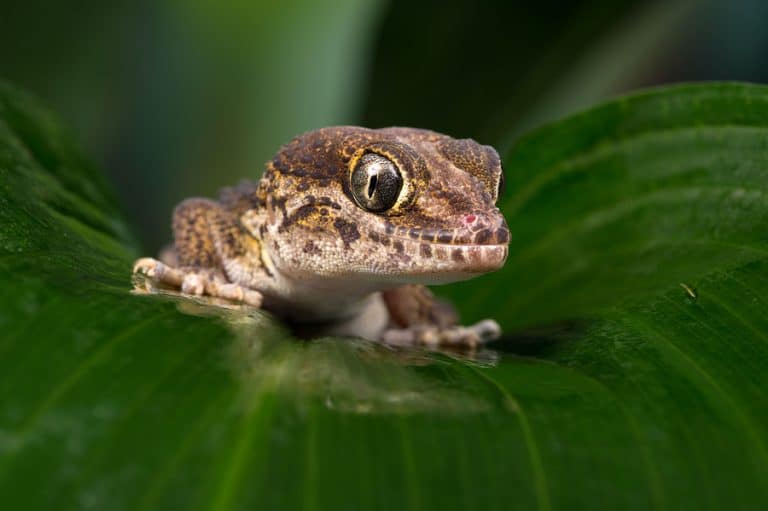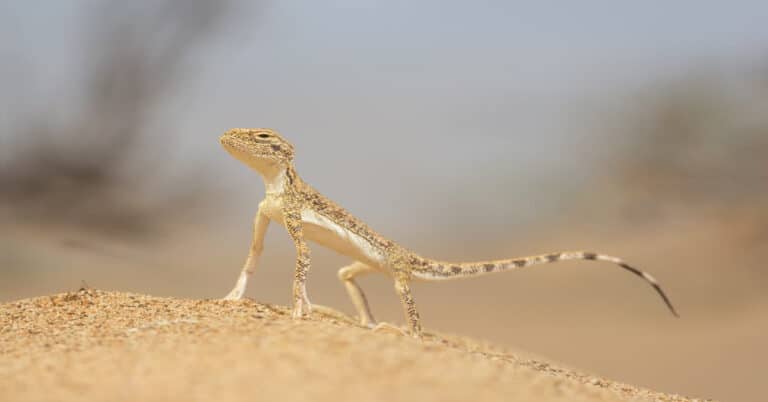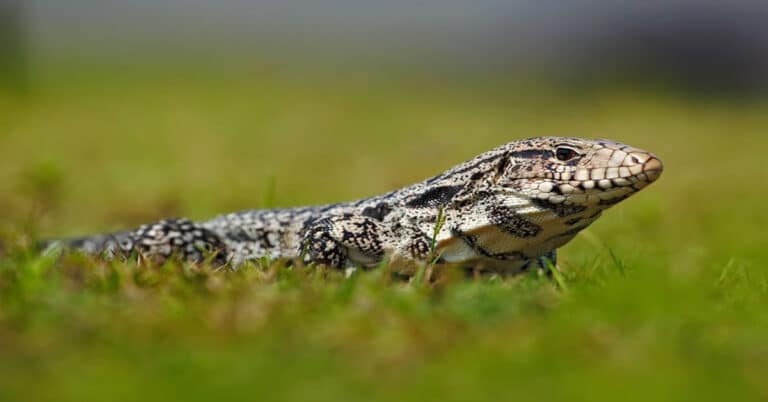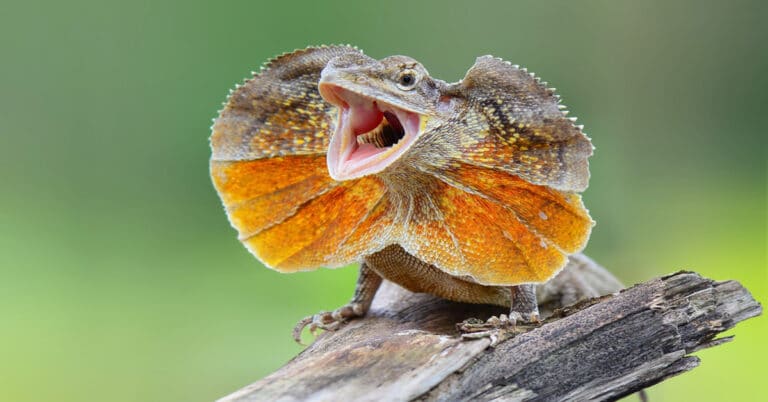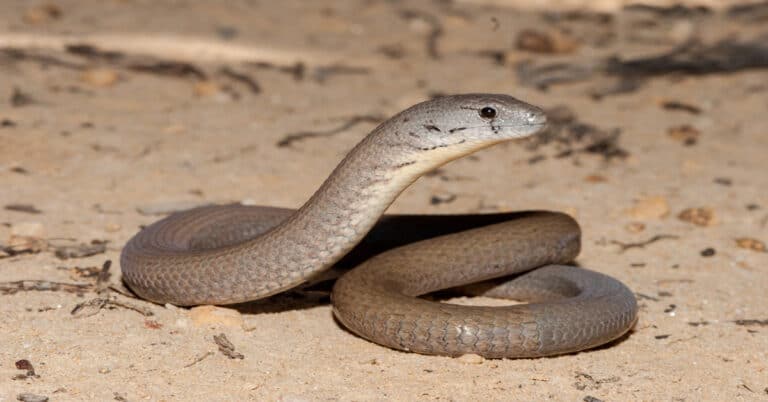Black Night Leopard Gecko: Facts and Care Guide
Lizards are first known to have come into this world during the late-Permian period, dating back to between 240-and-260 million years ago.
It is believed that geckos separated their lineage from other lizards between 180-and-225 million years ago. The Gecko genera is made up of five subfamilies, including of course, the leopard gecko, a favorite pet for many exotic animal lovers.
There are over 6,000 species of lizards in the world that currently exist, with about 1,500 of them belonging to the gecko family.
There are thought to be at least four species of leopard geckos in the world, with hundreds of different morphs. In fact, there are more and more leopard gecko morphs each year from the last due to their popularity in the pet trade, and it’s a way for breeders to make more money by breeding more exotic types of them.
One of these beautiful morphs is called the black night leopard gecko, the gecko species we’ll be getting into in todays piece.
This particular gecko, while most leopard geckos in pet stores go for about $30-$50, is worth a whopping $2,000-$3,000, and it’s easy to see why. They are so beautiful, and they are some of the rarest, most sought after morphs on the market.
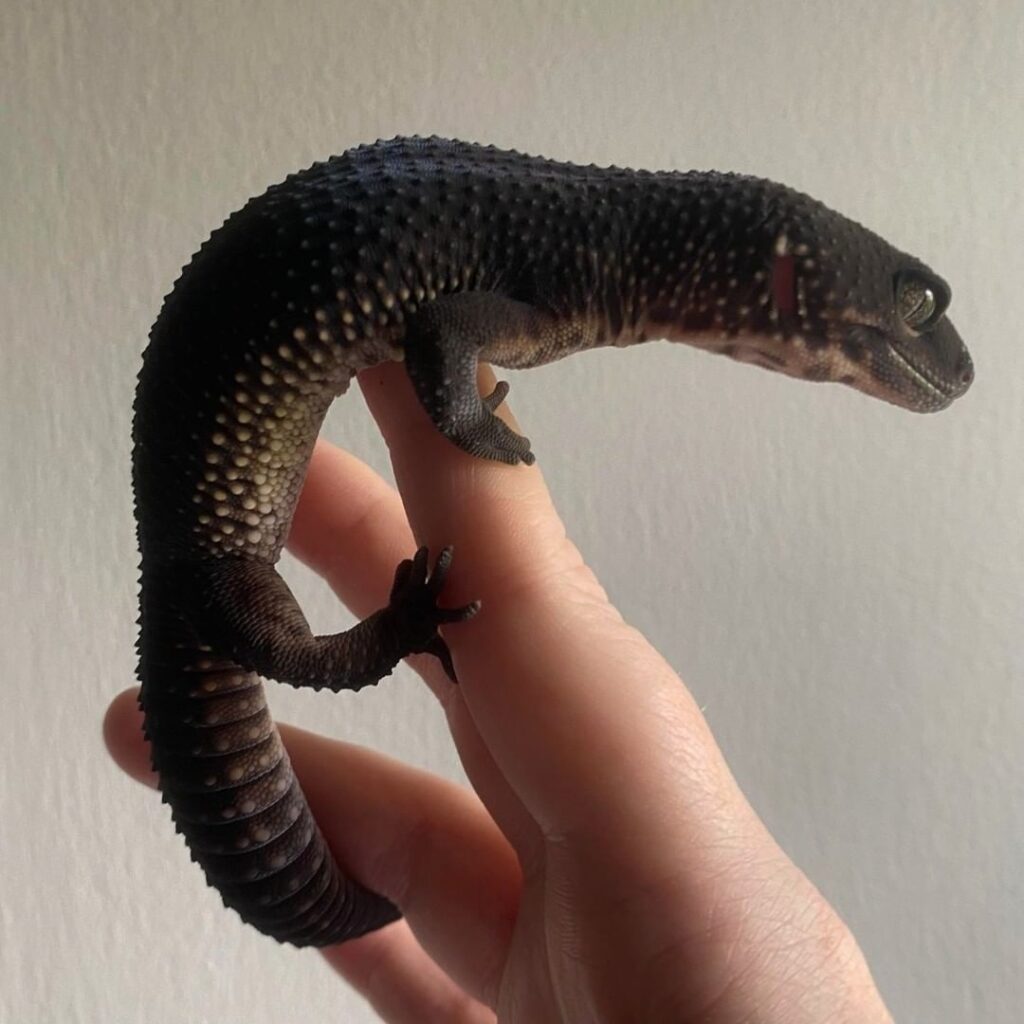
Baby Black Night Leopard Geckos
Now, exactly the way they come out is not be a certainty, as some are all black, while others are black, but have spots or patterns of some sort on them. The solid black morph is by far the more rare of the two.
In fact, only 5-to-10% of them come entirely black, with 10-to-15% of them being very dark with patterns, and about 80% of them coming out as a darker version of a leopard gecko you’d buy in a pet store.
Therefore, most of them will come out with a variety of patterns, much like the babies pictured above to the left.
Or, some can also come out like this little guy or gal to the right did, solid black with white legs and a white nose.
This would be the reason for their high cost, and also the reason this cost hasn’t dropped since they’ve begun breeding them. It’s not exactly easy to breed lizards, there’s a science to it, and it’s even harder to consistently get black nights on the regular.
Not to mention, each mother gecko lays just two eggs at a time (on occasion, mothers can lay just one, or up to three eggs), though she can lay up to five clutches in each breeding season. That’s an average of ten geckos if there aren’t any complications with their health upon birth. And if they’re lucky, just two will come out entirely black.
When breeding them, breeders will take the eggs out once they’ve been laid and put them into an incubator. Their incubation period can vary between 35-and-89 days, and they should be placed on a moisturized substrate during their time in it.
Leopard geckos should be incubated between 80-and-90 degrees. The lower side of that scale will result in females, with the warmer temperatures producing males. Setting the incubator in the middle of that range, around a consistent 85 degrees, will result in a mix of males and females.
Black Night Leopard Gecko Care
Leopard geckos should have a 20 gallon tank at minimum, especially if you have more than one in the enclosure.
It’s best to not put two males together however, as with most animal species, males fight one another for territory. This will especially be true if you have a female in with them. personable lizards
We all know how that story ends.
In contrast to putting them in a 20 gallon tank, you’ll want to give them a basking side so they can absorb heat whenever they feel the need. Lizards are reptiles, as we all know. This means they cannot regulate their own body temperature.
Therefore, heating is perhaps the most important element of their care.
This goes both ways as well, they need to be warm enough, but not too warm. Not only can they not provide their own heat, but they cannot cool themselves down on their own either. That’s just the price they pay for being cold blooded animals.
Therefore, their basking side should be around 85-to-95 degrees, with their cool side being around 75-to-78 degrees. Thermometers are very important for this, you’ll need to put one at each end of the enclosure.
A heating pad is also important in contrast to their basking light; at night time, you’re going to turn their basking light off. You’re replicating their day and night times, and if your place gets too cold at night, this could be a problem.
Just make sure their warm side doesn’t drop below 70 degrees at night and they will thrive. Also, make sure you put at least one hide on each end of their enclosure to ensure they feel safe and secure at all times, as well as ensuring they have a place to hide in both a cool, and warm spot.
As for their substrate, many people swear by simply using paper towels. Sand is far too fine of a substance for them, and they can easily consume it when they’re feeding.
The problem with this is that leopard gecko intestines are incredibly small, and it can easily clog them up and lead to their death.
If you want a more realistic look, you can use Zoo Med’s Clay Burrowing Substrate. Mix it with the appropriate amount of water, instructions will be on the bag or box you purchase, and make sure you spend a generous amount of time packing it down tightly to the bottom of your geckos enclosure.
You’ll have to wait upwards of a week for it to dry, but once it does, just be sure there aren’t any loose areas where the substrate didn’t stay compact.
You can keep your black night leopard gecko in that enclosure for three or four months before changing it, just be sure to keep it clean and pick up their feces, as well as dead insects they didn’t eat.
You shouldn’t have much of an issue with there being extra insects in the enclosure with them though, as they’re generally great eaters.
Insects will account for 100% of your leopard geckos diet.
You’ll want to purchase a calcium supplement for them, preferably one with vitamin D3 in it. But, don’t use it every time. You should be feeding your leopard gecko two-to-three times a week, feeding them four-to-seven crickets or roaches each time.
It’s a good rule of thumb to lightly dust these insects once a week prior to feeding your black night leopard gecko.
Those are good staples for their diet, but it should be diverse. Dubia roaches are perhaps the easiest, especially if you plan on breeding them yourself for your gecko so you don’t have to make regular trips to the pet store.
Dubia roaches are better for this than crickets because they’re much hardier creatures. You can have a box of roaches that you don’t feed or water for upwards of a month (you should not do this, always make sure your feeders are gut loaded), and they’ll still be alive.
Crickets on the other hand, you could give them both food and water, and within a week they’ll be dead, often times much sooner.
That being said, be sure to feed your gecko both of those, along with worms at times. This can include waxworms, mealworms, superworms, and silkworms. It’s best to use those as a once a week or so kind of treat due to their high fat content, and be sure not to feed them anything bigger than the width of their eyes as well.
That’s how to properly determine the correct size of their feeders.
Also, as mentioned above, black night leopard gecko intestines are very thin and very small, so do not feed them too much at a time, and be sure you do not allow them to get too thick. It can be difficult for the lizard to pass everything if they’re too full and plump.
As far as their humidity goes, it can be anywhere from 20-to-40%, owners have successfully kept leopard geckos at both humidity levels and anywhere in between.
If it’s too humid, it can cause repertory infections and lead to the death of your lizard, while it can cause dehydration if it isn’t humid enough.
It’s best to give them a water dish that has spring water it in, and only spring water, along with the appropriate amount of Reptisafe, a water conditioner designed to make water safe for them to drink.
You can also give your black night leopard geckos enclosure a few sprays here and there to raise the humidity levels a tad. If it goes above 40% there’s no need to worry. Assuming you didn’t entirely soak the enclosure with it, the levels will go down in a couple days, just don’t let it go above 40% on any type of regular basis.
If you do all of these things, it’s doubtful your leopard gecko will have an issue shedding its skin. But, if it does, it’s safe to give them a couple sprays as well, as it will help their old skin come off.
You may also catch them eating their sheds from time to time, which is nothing to worry about and is perfectly normal.
They do this for two reasons; one, it has nutrients in it, and two, it keeps predators from knowing where they were, or are in the wild.
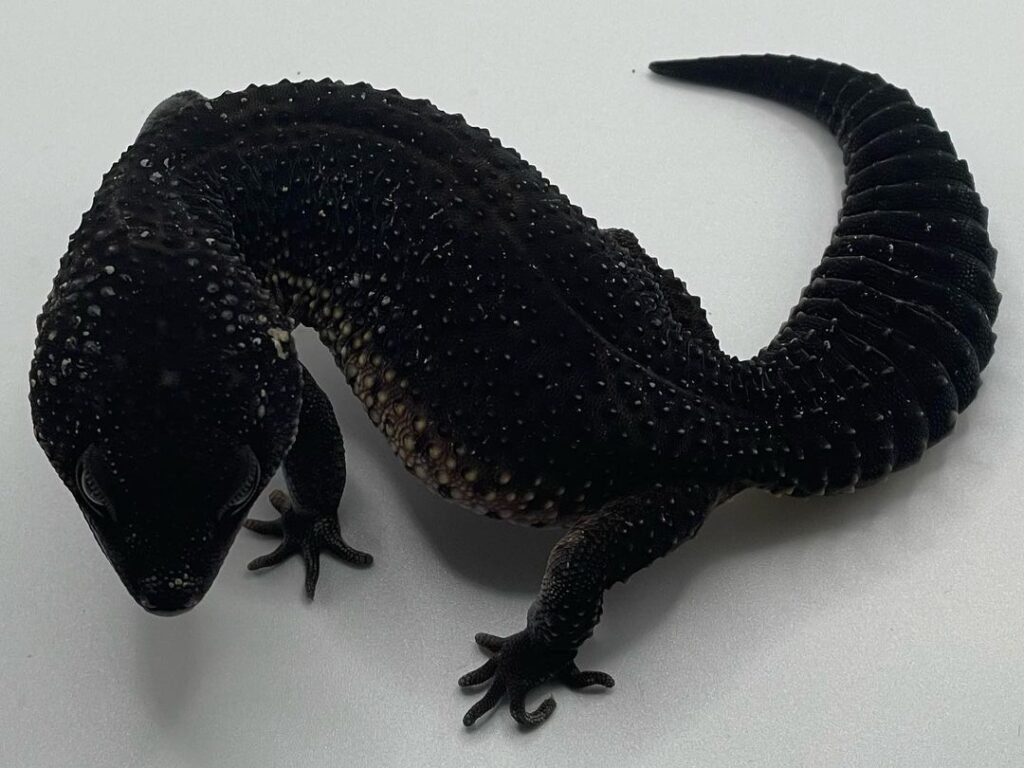
Summary
Leopard geckos naturally occur in Asia and the Middle East, predominantly in places such as Northern India, Pakistan, Afghanistan, and Iran. They live in the mountainous deserts and rocky grassland areas of these places.
Leopard geckos are such a popular animal in the pet trade because of their low maintenance, it’s a relatively easy exotic animal to care for, easier than most other exotic animals, and easier than most other lizards.
That being said, take good care of them.
But, morphs such as black night leopard geckos are known for having health issues at times due to the intensive breeding many breeders will put them through.
Luckily, this isn’t always the case, but it is something to watch out for should you want to purchase any type of leopard gecko morph. The best thing to do is ask the breeder a lot of questions pertaining to their breeding methods and go from there according to their answers.
Leopard geckos, including black night leopard geckos, can live up to 15-20 years, making them a relatively long-term commitment for owners. They also grow between 6-and-7 inches as adults, like other leopard geckos.
All in all, black night leopard geckos are the perfect choice for many reptile lovers around the globe.
Where to Buy Black Night Leopard Geckos
There are a number of reputable sources you could go to if you want to purchase a black night leopard gecko. First, we’ll mention GeckoPia. This man is a well respected breeder that has all sorts of leopard gecko morphs for sale. You could also try your luck with CBReptile or MorphMarket.
Something that’s important to know, both GeckoPia and CBReptile are individual breeders, while MorphMarket is more or less eBay for reptiles with a number of different sellers. We hope this helps you out if you’re looking to purchase one of these gorgeous beings.
If you enjoyed this piece, feel free to share it on social media!
And, if you enjoyed this piece on black night leopard geckos, be sure to check out this piece we did on eight gecko species from Florida

I started writing in the fourth quarter of 2018. I wrote solely about MMA and boxing up until October of 2022, where I began writing about animals; primarily dangerous, venomous species. They’ve always fascinated me. Considering, my goal is to make a living by teaching people about these wonderful creatures. You can check out my Facebook page, where every article I’ve ever written currently sits, or you can check out my Twitter page, where I’ve shared all of my animal pieces to date.

